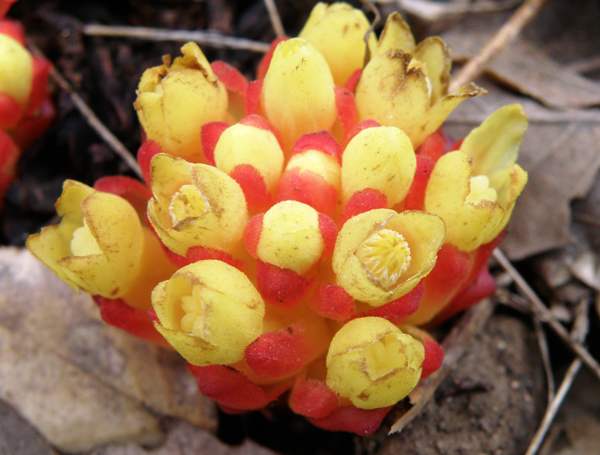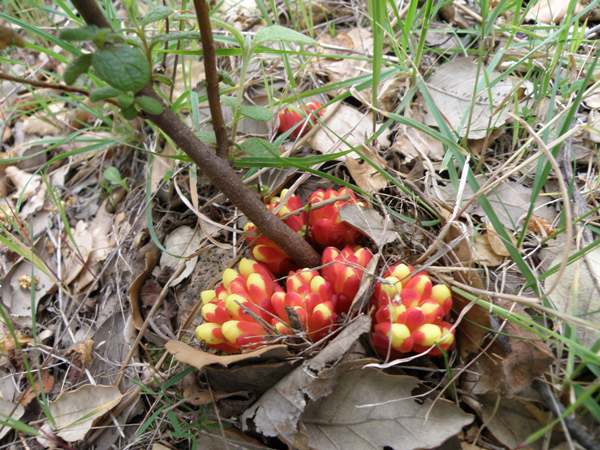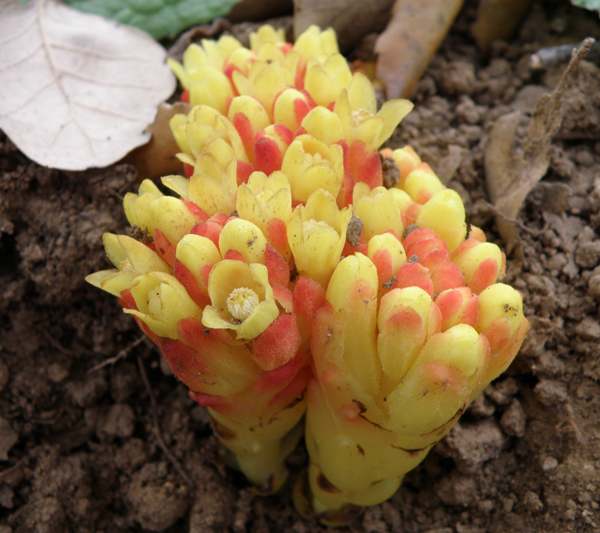Cytinus hypocistis - Cytinus
Phylum: Magnoliophyta - Class: Liliopsida - Order: Malpighiales - Family: Rafflesiaceae

Some plants you seem to take a lifetime to find but, in the end, it turns out that you just have to look at the right time of year and they are everywhere! This member of the Rafflesiaceae family (most other members are tropical) is a good example of that. Lacking chlorophyl and having no real roots or leaves, it lives as a parasite on cistus and other members of the rock-rose family (Cistaceae), and can be found in vast numbers around cistus shrubs from mid-April onwards. It is common throughout the Mediterranean region and can be found in maquis and garrigue habitats - the presence of rock-rose species being the key to finding it.

Cytinus hypocistis has no green leaves and is bright red until the flowers, which are yellow, open. The male flowers are in the centre of the plant and the female ones around the edges. The flowers each have four petals and, when flowering is over, the plant produces a berry fruit.
A red-flowered species, Cytinus ruber, also known by the synonym Cytinus hypocistus ssp. clusii, is parasitic on Cistus creticus. The yellow form shown here is most often seen growing on the roots of white-flowered cistus plants such as Cistus parviflorus and Cistus salvifolius.

The specimens shown here were photographed in the Algarve in Portugal in April.
Please Help Us: If you have found this information interesting and useful, please consider helping to keep First Nature online by making a small donation towards the web hosting and internet costs.
Any donations over and above the essential running costs will help support the conservation work of Plantlife, the Rivers Trust and charitable botanic gardens - as do author royalties and publisher proceeds from books by Pat and Sue.

